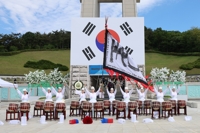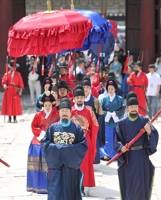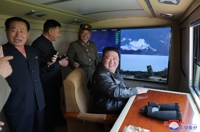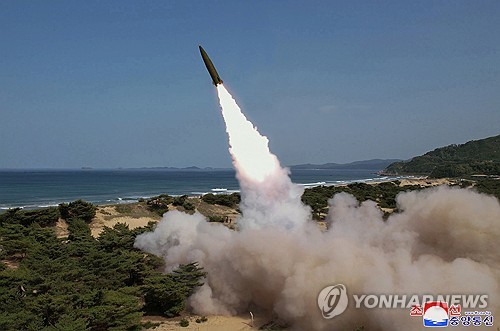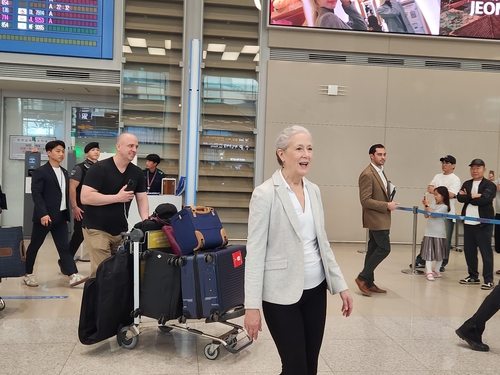(Yonhap Interview) U.S. special operations commander in S. Korea stresses role to 'synchronize' capabilities amid N.K. threats
By Chae Yun-hwan
PYEONGTAEK, South Korea, May 2 (Yonhap) -- The U.S. special operations commander in South Korea highlighted his unit's role to "synchronize" operations to build readiness amid efforts to deter military threats from North Korea.
Brig. Gen. Derek Lipson, commander of the Special Operations Command Korea (SOCKOR), made the remarks in an interview with Yonhap News Agency on Tuesday on the sidelines of joint airborne drills between South Korean and U.S. commandos at a major U.S. military base.
"Relationships over time allow us to work together to build readiness, and we've been doing that with SOCKOR for 35 years now," Lipson said. "It allows us to better synchronize building readiness on the peninsula."
Such efforts were on full display as more than 100 South Korean and U.S. special operations troops parachuted out of a CH-47 helicopter at an altitude of around 400 meters above Camp Humphreys in Pyeongtaek, 60 kilometers south of Seoul.

Brig. Gen. Derek Lipson, commander of the U.S. Special Operations Command Korea, speaks to Yonhap News Agency in an interview at Camp Humphreys in Pyeongtaek, 60 kilometers south of Seoul, on April 30, 2024. (Yonhap)
"These jumps intend to train primarily for airborne infiltration into geographically difficult regions to navigate," Sfc. AJ Sewell, commander of the jump training, said. "As airborne paratroopers, we're prepared to jump into any environment."
Lipson described troop readiness as "cyclical" and said that the allies' combined jumps have to take place at a frequency that would ensure they can effectively carry out such operations.
The drills took place as the allies have sought to sharpen deterrence amid heightened tensions from the North's continued saber-rattling this year, including what it called a drill simulating a nuclear counterattack with super-large multiple rocket launchers last week.
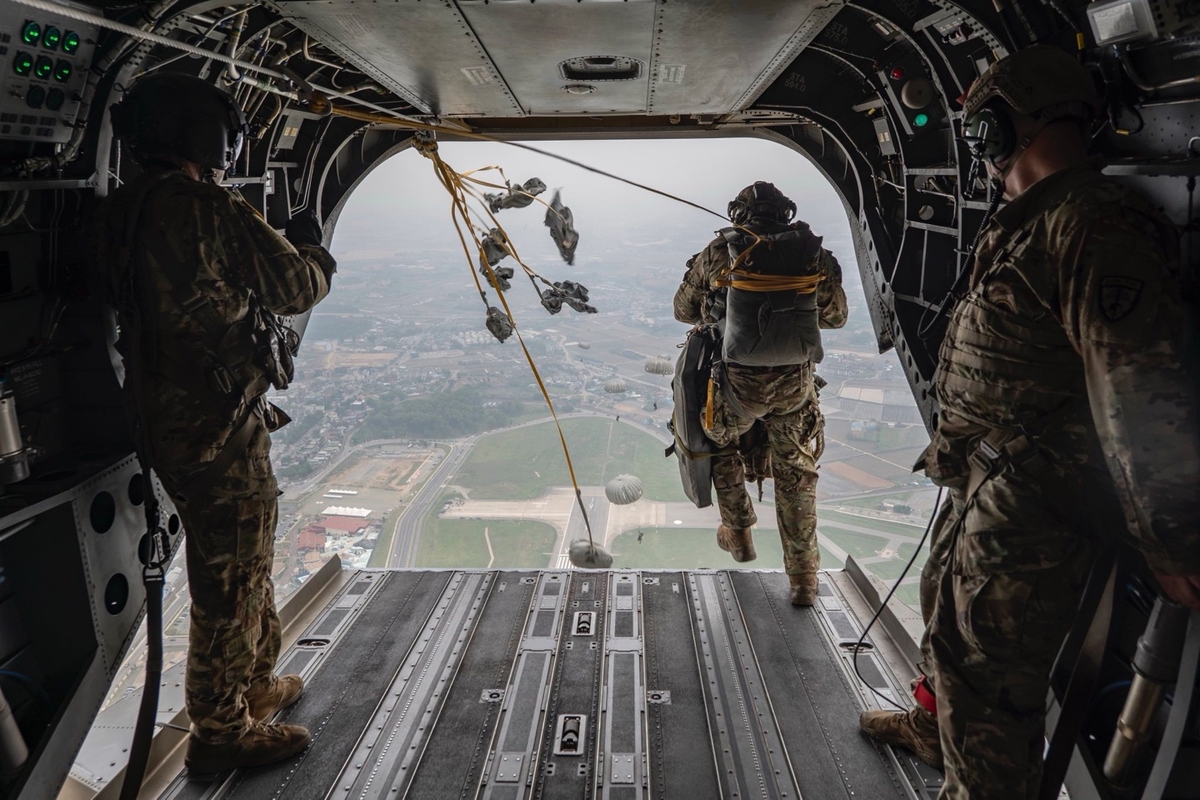
A U.S. Army Green Beret assigned to Special Operations Command Korea exits a CH-47 Chinook during a regular training jump at Camp Humphreys in Pyeongtaek, 60 kilometers south of Seoul, on April 30, 2024, in this photo provided by the unit. (PHOTO NOT FOR SALE) (Yonhap)
The North said it was held as a "clear" warning to recent South Korea-U.S. drills, including an airborne infiltration exercise with special operations troops on April 18 that Seoul described as training to eliminate a target.
Pyongyang has long accused the allies' joint drills as rehearsals for an invasion against it, reacting especially angrily to drills viewed as training that targets its leadership.
Lipson stressed the routine nature of the exercise to maintain readiness and rejected the notion that his troops are training for the so-called decapitation mission.
"Militaries require training to be ready if asked to respond in conflict or crisis and that's all it was," he said. "We are training infiltration methods that are routine part of (special operations forces) missions ... but it's not tied to any specific mission set or location."
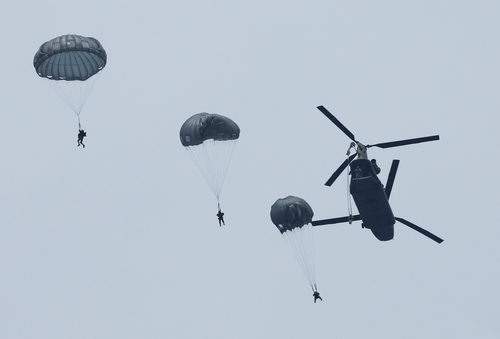
U.S. Special Operations Command Korea personnel stage a static-line jump from a CH-47 transport helicopter above an airfield in Camp Humphreys in Pyeongtaek, 60 kilometers south of Seoul. (Yonhap)
Established in 1988, SOCKOR operates special operations troops across multiple domains and is the only theater special operations command in which U.S. and host nation forces are organized for combined operations, according to the unit.
Tuesday's joint drills also took place to mark the 35 years since SOCKOR's founding and the 65 years of engagement between U.S. special operations forces and the South Korean Army's Special Warfare Command, Lipson said.
Going forward, the U.S. general said he seeks to create a training cycle with South Korean forces to build readiness and ensure deterrence.
Lipson also expressed willingness to train with other partners in the region to ensure the defense of the allies amid regional security concerns stemming from North Korea and its ties with China and Russia.
"If it creates readiness, which creates deterrence, which allows us to defend the alliance ... we will work with anyone," he said. "Nothing happens in isolation. The relationship between DPRK, China and Russia has an impact on the relationship of other regional actors and we need to be cognizant of that."
DPRK stands for the North's official name, the Democratic People's Republic of Korea.
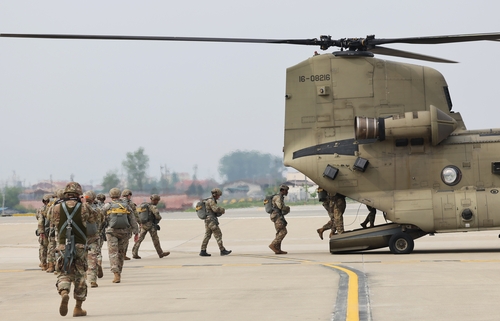
U.S. Special Operations Command Korea personnel board a CH-47 transport helicopter to stage airborne infiltration drills at an airfield in Camp Humphreys in Pyeongtaek, 60 kilometers south of Seoul. (Yonhap)

U.S. Army Col. Marcus Franzen, chief of staff of the Special Operations Command Korea, prepares to complete his 1,503rd jump at Camp Humphreys in Pyeongtaek, 60 kilometers south of Seoul, on April 30, 2024, in this photo provided by the unit. (PHOTO NOT FOR SALE) (Yonhap)
yunhwanchae@yna.co.kr
(END)
-
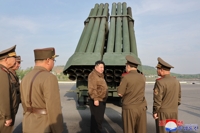 NIS looking into N. Korea's suspected provision of weapons to Russia
NIS looking into N. Korea's suspected provision of weapons to Russia -
 Thailand seeks extradition of S. Korean suspect in Pattaya murder
Thailand seeks extradition of S. Korean suspect in Pattaya murder -
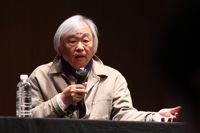 Paik Kun-woo's 1st Mozart album: a return to musical roots
Paik Kun-woo's 1st Mozart album: a return to musical roots -
 N. Korea's Kim, daughter attend ceremony for new street in Pyongyang
N. Korea's Kim, daughter attend ceremony for new street in Pyongyang -
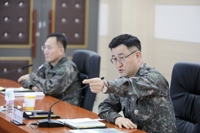 Army chief to visit U.S. for talks with counterpart, land forces symposium
Army chief to visit U.S. for talks with counterpart, land forces symposium
-
 NIS looking into N. Korea's suspected provision of weapons to Russia
NIS looking into N. Korea's suspected provision of weapons to Russia -
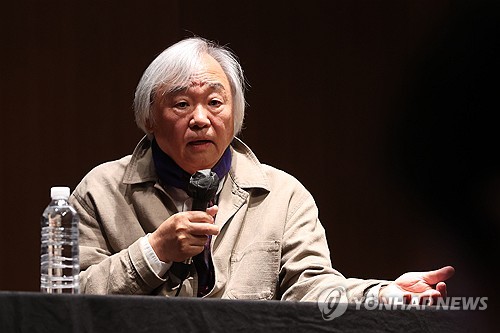 Paik Kun-woo's 1st Mozart album: a return to musical roots
Paik Kun-woo's 1st Mozart album: a return to musical roots -
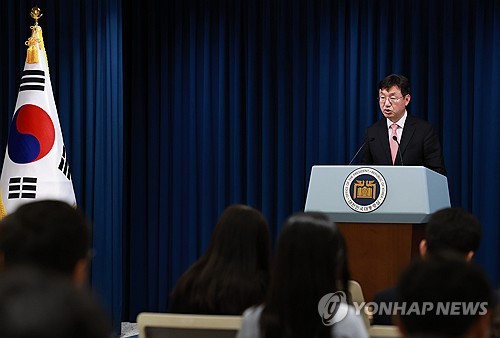 Yoon's office vows to firmly respond to unfair treatment of S. Korean companies amid Japan's pressure on Naver
Yoon's office vows to firmly respond to unfair treatment of S. Korean companies amid Japan's pressure on Naver -
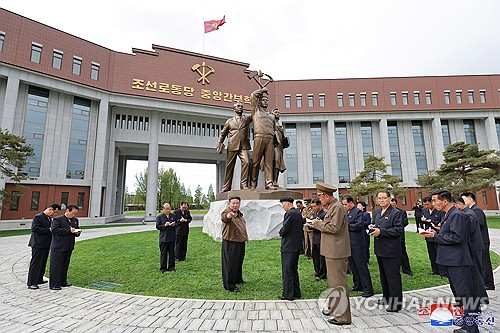 N.K leader visits newly built ruling party training school
N.K leader visits newly built ruling party training school -
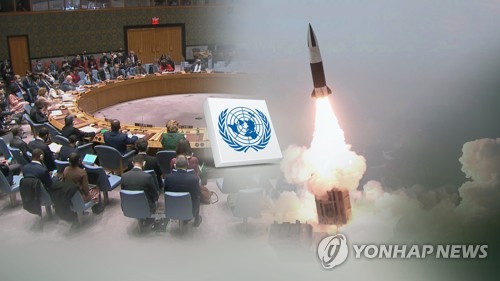 N. Korea slams U.N. members' sanctions enforcement as 'provocations'
N. Korea slams U.N. members' sanctions enforcement as 'provocations'
-
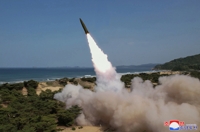 (2nd LD) N. Korea says it test-fired tactical ballistic missile with new guidance technology
(2nd LD) N. Korea says it test-fired tactical ballistic missile with new guidance technology -
 (2nd LD) N. Korea fires short-range ballistic missiles toward East Sea: JCS
(2nd LD) N. Korea fires short-range ballistic missiles toward East Sea: JCS -
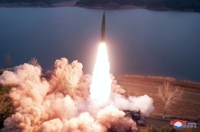 (LEAD) N. Korea says it test-fired tactical ballistic missile with new guidance technology
(LEAD) N. Korea says it test-fired tactical ballistic missile with new guidance technology -
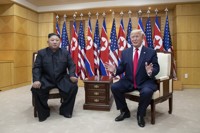 U.S. expert says N. Korea might ignore Trump if he returns to White House
U.S. expert says N. Korea might ignore Trump if he returns to White House -
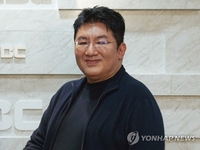 Hybe's Bang: Malice of one individual should not damage system
Hybe's Bang: Malice of one individual should not damage system

